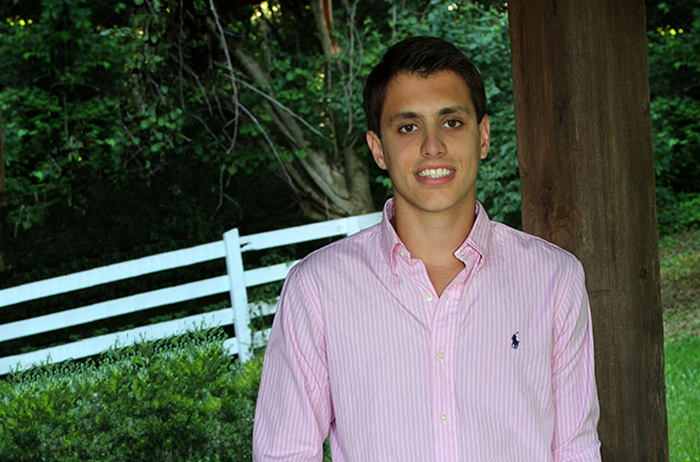Diving Deep

Photo courtesy of Cole Rinehart '17.
Cole Rinehart ’17
Many Americans know little, if anything, about the Lattimer Massacre, a 218-year-old mass murder in northern Pennsylvania that changed the tides of labor and ethnic history. As a high-schooler, Cole Rinehart ’17 researched the event extensively and created a national-award-winning website that compellingly argues the massacre's weight in American scholarship. Today, this history buff and John Dickinson Scholar—who chose Dickinson, in part, because of its rich institutional history—is turning a critical eye on ultraviolet light, as part of a grant-funded project, and on hypertension, as part of a summer fellowship program funded by the National Institutes of Health and the American Heart Association. He also is a certified EMT, and he continues a longtime passion (or, as he jokingly calls it, a “borderline obsession”) as a member of Dickinson’s cross-country and indoor and outdoor track-and-field teams.
Major:
Clubs and organizations:
Men’s cross country, men’s indoor track and field, and men’s outdoor track and field.
Honors/scholarships/awards:
Alpha Lambda Delta (academic honor society), Dean’s List and John Dickinson Scholarship.
On choosing a major:
After shadowing at Lancaster General Hospital the summer between my junior and senior year of high school, I knew I wanted to be a doctor. After talking with my First Year Seminar advisor and biology professor at Dickinson, biology seemed like the best choice to fulfill the course requirements for medical school and satisfy my interests.
On choosing Dickinson:
I was looking for a college with strong academics and a competitive cross country/track and field team. After visiting Dickinson and meeting with students and professors and Coach Nichter, I felt Dickinson was the best fit for me. I was also attracted to the history of the campus.
Post-Dickinson plans:
After graduating from Dickinson, I hope to attend medical school and, eventually, become a trauma surgeon. I also hope to start a family and continue running.
Favorite book:
Running with the Buffaloes by Chris Lear.
Favorite movie:
Christmas Vacation.
Favorite place on campus:
Indoor track in the Kline Fitness Center.
Favorite Dining Hall food:
Fried eggs.
As a kid, I wanted to be …
… a firefighter.
Little-known skill:
In summer 2014 I attended an emergency medical technician (EMT) certification program at the Harrisburg Area Community College. I am now a nationally registered and Pennsylvania certified EMT.
Proudest accomplishment:
I participated in the National History Day (NHD) program for three years in high school, winning Pennsylvania’s state competition in the individual website category my senior year and placing third in the national contest for my website, The Lattimer Massacre: A Turning Point in Labor and Ethnic History. For context: More than 500,000 students nationwide participate in NHD each year. Contestants conduct extensive research through libraries, archives, museums, oral-history interviews and historic sites, and after analyzing and interpreting sources and drawing conclusions about their topics’ significance in history, they present their work in original papers, websites, exhibits, performances or documentaries.
About my research at Dickinson:
Last semester, as part of my genetics class, I completed a seven-week experiment on ultraviolet light mutagenesis in escherichia coli, generating a grant proposal and formal lab report as part of the project.
About my summer 2015 internship:
Although hospital internships are very scarce for upcoming juniors, I was able to complete an internship at the Penn State College of Medicine, as one of five interns participating in the American Heart Association Summer Undergraduate Research Fellowship (AHA SURF) program. The American Heart Association and the National Institutes of Health fund his research. I worked in the laboratory of Dr. Sean D. Stocker, an associate professor in the Department of Cellular and Molecular Physiology at the Penn State College of Medicine whose laboratory primarily investigates obesity induced hypertension and salt-sensitive hypertension. My project this summer was to investigate the effects of intracerebroventricular benzamil administration on osmotic responses to hypertonic sodium chloride infusion. Ultimately, my experience allowed me to increase my biological knowledge and skills.
Learn more
Published May 29, 2015